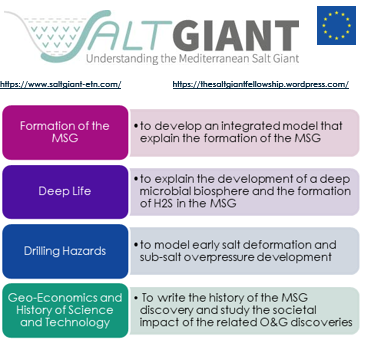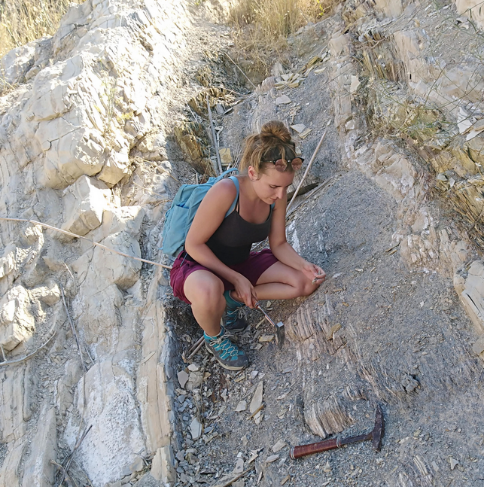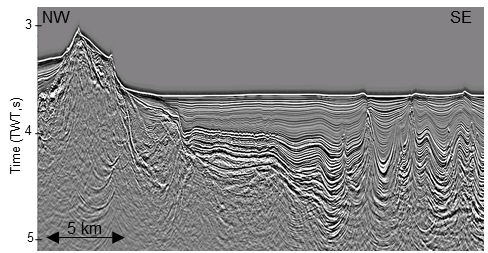When we talk about controversial topics in geosciences, the Mediterranean Salt Giant (MSG) and its origin is one which comes immediately to mind. Since the discovery of Messinian evaporites under the Mediterranean deep-sea floor in 1970, many scenarios on what happened have been proposed, and yet none of them seem to fit the data throughout the whole basin.
SALTGIANT European Training Network (ETN) is a cross-disciplinary international network dedicated to better understand the formation of the Late Miocene Mediterranean Salt Giant. This project brings together geologists, geophysicists, geochemists, microbiologists, economists, and historians, with 15 Early Stage Researchers (ESRs) at its core. The doctoral students work among numerous academic organizations and collaborate with several private companies, as well as public and non-governmental organizations.


The Italian geoscience community is highly involved in this project: five of the ESRs studied for their master’s degree in Italy (Universities of Trieste, Torino, Federico II Napoli and Bologna). Among the 23 partners of the project six are Italian: GEPlan Consulting, the universities of Torino, Pavia, Trieste, ENI, Italkali and the SISSA Medialab. Lastly, two of the 13 beneficiary institutes are in Italy: The University of Palermo (UniPa) and The Istituto Nazionale di Oceanografia e di Geofisica Sperimentale (OGS).
Firstly, the UniPa is hosting ESR Athina Tzevahirtzian (MS in Oceanography at University of Bordeaux, MS in Geography at the University of La Rochelle), under the supervision of Prof. Antonio Caruso and Prof. Attilio Sulli. She is performing geochemical, sedimentological and bio- cyclostratigraphical analyses on outcropping successions to provide new insights on the evolution of the Caltanissetta Basin, in Sicily. She will collaborate with the CNRS in the University of Montpellier (France) and the University of Hamburg (Germany).



Recent Comments